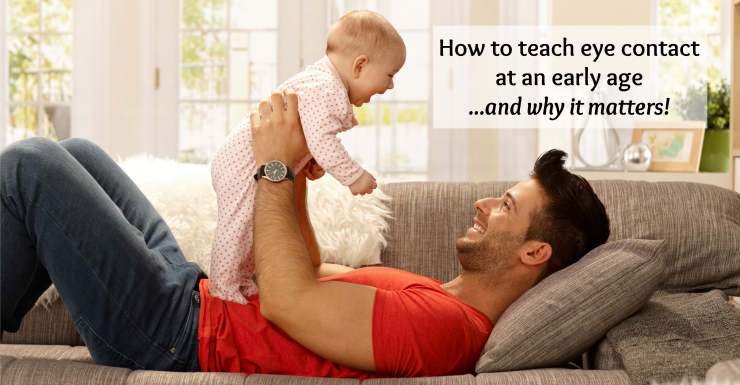How To Teach Eye Contact From An Early Age and Why It Matters
April 16, 2015
I am a positive reinforcement type of nurse practitioner, and I hope you are that type of parent as well. Positive reinforcement is a pretty simple model. When children come into the office and behave very well, I always cheer, clap, high-five and verbally acknowledge the good behavior. And sometimes, I even reward the behavior with some type of small prize. Positive reinforcement works like magic; makes children behave, creates happy parents and an even happier Nurse Dani.
So after having thousands of interactions of giving children rewards, I have found that an incredibly crucial part of respect is typically missing, and even worse, most parents aren’t teaching it. I’m not taking about your classic ‘please and thank yous’. That is usually prompted/conjured/manipulated/begged out of the kid soon enough by mom or dad. (And if not, they sure aren’t getting any prize out of me, trust me.)
I’m talking about the lost art of eye contact.
Increasingly, young healthy children gaze away when they ask for something and look like they’re thanking the wall when I finally do give it to them. The sad part is, they just don’t know better.
When I think about the topic of eye contact, I flashback to my dad’s voice echoing through my head, “Look at me when I talk to you.” And guess what? He was right. Contrary to public opinion, eye contact is a skill that every developmentally appropriate child possess, but yet, it does not always come naturally. That might seem like a dichotomy, but it isn’t.
From the time healthy children are born they increase their ability to hold eye contact, but just because someone can, doesn’t mean that they do. Eye contact needs to be taught and fostered by parents, now more than ever. Here is a few easy ways to do it!

How To Teach Your Child To Make Eye Contact
1. Practice eye contact by giving it yourself
How much do you look at your baby? Do you hold eye contact with your child during a normal conversation? These are the staggering facts: the average person checks his or her phone 150 times a day. To make matters worse, the typical American spends more than five hours per day using either computers or mobile devices and then another four and a half hours watching TV. I know I love watching Shark Tank as much as anyone, but if more time is spent looking at the TV and phone than making eye contact with your child, you know we have a problem. This technology driven generation has huge implications on our interactions and how we treat people! Be a role model to your children in social interaction. Take time to disconnect from technology, hold eye contact with your child as much as possible when talking to them, and show them that they are more important than the technological distractions of everyday life.
2. Know what to developmentally expect from your child
Healthy infants are born with the ability to hold eye contact. Eye contact is limited to a few seconds during the newborn stage, but developmentally, the ability to hold eye contact should just increase from there. Do you know why it is so critically important that you hold your infant? The average newborn can see about 8 to 12 inches, the distance from where you hold them in your arms to your face. By holding your baby, he or she will learn how to interpret the world just by looking at you! Holding your baby and making eye contact is crucial for development! In fact, eye contact is such an important measurement of development that I never perform a well visit without assessing a child’s ability to hold eye contact. If a baby can’t hold eye contact with me for at least a few seconds by 3-4 months, that is a red flag. If that describes your child, you should certainly speak to your pediatric health provider. Otherwise, learn to expect eye contact from your child, both eye contact with you and eye contact with others from the get-go.
3. Train eye contact at the same time you train basic manners
One of the earliest social interactions that your toddler will learn with other people is when to say please and thank you. Most toddlers learn this anywhere between 15 months to 2 years. This is the perfect training ground for eye contact! Instead of just asking children to say the words, gently remind them to establish eye contact with you while saying it. The same eye contact should be given to whoever they are requesting something from. If they don’t establish eye contact, then simply don’t grant their request until they do. They will learn very quickly that eye contact is an important part of their request. Trust me, not only is your toddler capable of it, but it is far easier to teach them eye contact from the beginning then later in life.
According the Psychology Today, eye contact is the “strongest form of nonverbal communication.” So, look here. Let’s give our children a head start in learning this critical skill by modeling it and teaching it early! Creating confident children that look life in the eyes is invaluable.